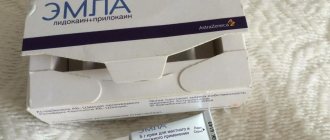Home | About us | Delivery | Advertisers | Login | Registration
Delivery on Sundays and holidays does not work!
- Medicines
- dietary supplementsVitamins
- Categories from A to Z
- Brands from A to Z
- Products from A to Z
- Medical equipment
- beauty
- Child
- Care
- Honey products appointments
- Herbs and herbal teas
- Medical nutrition
- Journey
- Making medicinesStock
Pharmacy online is the best pharmacy in Almaty, delivering medicines to Almaty. An online pharmacy or online pharmacy provides the following types of services: delivery of medicines, medicines to your home. Online pharmacy Almaty or online pharmacy Almaty delivers medicines to your home, as well as home delivery of medicines in Almaty.
my basket
Apteka84.kz is an online pharmacy that offers its customers medicines, medicinal and decorative cosmetics, dietary supplements, vitamins, baby food, intimate products for adults, medical equipment and thousands of other medical and cosmetic products at low prices. All data presented on the Apteka84.kz website is for informational purposes only and is not a substitute for professional medical care. Apteka84.kz strongly recommends that you carefully read the instructions for use contained in each package of medicines and other products. If you currently have any symptoms of the disease, you should seek help from a doctor. You should always tell your doctor or pharmacist about all the medicines you take. If you feel you need further help, please consult your local pharmacist or contact our GP online or by telephone.
© 2022 Pharmacy 84.
Betasalicylic ointment (0.5mg+30.0mg)/1g 30g No.1
Name
Betasalicylic ointment d/nar.prim.(0.5mg+30mg)/1g in tubes 30g in pack No. 1
Description
The ointment is white or almost white.
Main active ingredient
Betamethasone + salicylic acid
Release form
ointment
Dosage
30g
Pharmacological properties
Combined drug with anti-inflammatory and keratolytic effects for external use.
Indications for use
Uninfected subacute and chronic hyperkeratotic and dry dermatoses sensitive to corticosteroid therapy, such as psoriasis, chronic atopic dermatitis, neurodermatitis (chronic lichen sicca), lichen planus, eczema (including coin-shaped eczema, hand eczema, eczematous dermatitis), dyshidrosis, seborrheic dermatitis scalp, ichthyosis and other ichthyotic lesions.
Directions for use and doses
The ointment is applied in a thin layer, lightly rubbed in 2 times a day - in the morning and at night, completely covering the affected areas of the skin. In some cases, a supporting effect can be achieved by using applications once a day. The duration of the course of treatment is determined by its effectiveness, as well as the patient’s tolerability of the drug, the presence and severity of side effects. The duration of continuous treatment should not exceed 2-3 weeks. Use on the face with caution, no more than 5 days in a row. Long-term continuous treatment should be avoided in all patients, regardless of age. Maximum daily dose: The minimum effective dose necessary to control symptoms of the disease should be selected. The maximum weekly dose of the drug is 60 g. Use in persons with impaired liver and kidney function: it is recommended to use it for a minimum period in the smallest amount that provides a therapeutic effect. In elderly people, no dose adjustment is required. Children: prescribed to children from 2 years of age, the maximum duration of continuous treatment is 5 days. The drug is prescribed with great caution due to the fact that with a larger area of skin relative to body weight than in adults and an insufficiently developed epidermis in children, it is possible to absorb larger amounts of both betamethasone and salicylic acid, and, consequently, the appearance of systemic reactions, manifested by suppression of the function of the hypothalamic-pituitary-adrenal system, the development of Cushing's syndrome, growth retardation, lag in weight gain and increased intracranial pressure. The use of ointment under diapers and diapers (especially plasticized ones) can lead to increased absorption, because the diaper acts as an occlusive dressing. If you accidentally miss the scheduled time for using the drug, the next application of the ointment should be carried out as soon as possible. If there is a short period of time left before the next scheduled use, the missed dose is cancelled. The next time you use the drug, there is no need to increase the amount of ointment applied.
Use during pregnancy and lactation
It is possible only if the effect of therapy outweighs the potential risk to the fetus, but only for a short time and on small areas of the skin. During breastfeeding - only according to strict indications, but the drug should not be applied to the skin of the mammary gland before feeding. It is currently unclear whether corticosteroids, when applied topically, can pass into breast milk as a result of systemic absorption, so the need to prescribe the drug should be taken into account when deciding whether to stop breastfeeding or discontinue the drug.
Precautionary measures
In cases where hypersensitivity reactions (itching, burning and redness) or excessive dryness develop during the first use of the drug, you should stop using it. In case of infection, appropriate etiological treatment should be prescribed. If dandruff or keratinization disappears, continue treatment with corticosteroids only. The drug should not be used on the skin of the eyelids and periorbital area and should not be allowed to get into the eyes. Long-term use on the facial skin is not recommended due to the possible development of rosacea (rosacea), perioral dermatitis, acne (blackheads) and facial skin atrophy. The use of the drug in the anogenital area and areas with atrophied skin should be avoided. When using the drug in patients with impaired liver function and during long-term therapy, especially with the use of occlusive dressings, the possible increased absorption of active substances and the manifestation of systemic effects of betamethasone and salicylic acid should be taken into account. Topical corticosteroids may be harmful for psoriasis for a number of reasons, including the potential for relapse of symptoms after tolerance has developed, the risk of generalized pustular psoriasis, and local or systemic toxicity due to decreased skin barrier function. Topical corticosteroids may mask the clinical picture of an allergic reaction to any of the components of the drug. Relapse is possible if treatment is interrupted. The infection may worsen and healing may be delayed. Application in pediatrics. In children, signs of suppression of the hypothalamic-pituitary-adrenal system and the appearance of external corticosteroid effects under the influence of local corticosteroids may be more frequent than in adult patients. This is due to higher absorption of the drug in children due to the larger ratio of surface area to body weight. In children receiving treatment with topical corticosteroids, suppression of the function of the hypothalamic-pituitary-adrenal system, Cushing's syndrome, delayed linear growth, delayed weight gain, and increased intracranial pressure may be observed. Manifestations of adrenal suppression in children: low plasma cortisol levels and lack of response to ACTH stimulation. Increased intracranial pressure is manifested by bulging of the fontanelle, headache, and bilateral swelling of the optic discs.
Interaction with other drugs
Salicylic acid may enhance the penetration of other topically applied medications. Therefore, treatment of skin areas with the drug should not be combined with other medications or cosmetics. Light oxidizing agents and strong alkaline compounds lead to the decomposition of corticosteroids. Salicylic acid is incompatible with phenols and zinc oxide.
Contraindications
- Hypersensitivity to betamethasone, salicylic acid or other components of the drug;
- bacterial (including tuberculosis and syphilis) and fungal skin infections without proper etiological treatment;
- viral infections (eg, chickenpox, herpes simplex, herpes zoster, molluscum contagiosum);
- skin reactions after vaccination, widespread plaque psoriasis, acne, rosacea, perioral dermatitis, skin itching (including perianal and genital), diaper dermatitis;
- wounds and obvious lesions of the skin and mucous membranes;
- children under 2 years of age.
Do not use in ophthalmology, around the eyes and under occlusive dressings.
Compound
1 g of ointment contains 0.5 mg of betamethasone (in the form of betamethasone dipropionate) and 30 mg of salicylic acid as active ingredients. Excipients: liquid paraffin, soft white paraffin.
Overdose
Symptoms: when applying the drug to large areas of affected skin for a long period (more than 3 weeks), especially when using occlusive dressings, or with prolonged use in children, it is possible to increase the absorption of active ingredients into the systemic circulation and increase systemic side effects associated with the action betamethasone (growth retardation, Cushing's syndrome, benign increase in intracranial pressure after treatment, hyperglycemia (increased blood glucose levels), glycosuria, hypokalemia (decreased potassium levels in the blood), increased blood pressure) and salicylic acid (pallor, fatigue , drowsiness, hyperventilation due to rapid breathing, nausea, vomiting, hearing impairment, confusion). Treatment: Appropriate symptomatic treatment is indicated. Acute symptoms of hypercortisolism are usually reversible. If necessary, correction of electrolyte imbalance is indicated. In case of chronic toxicity, slow withdrawal of corticosteroids is recommended. Treatment of salicylicism is symptomatic. Measures are taken to more quickly remove salicylates from the body. Sodium bicarbonate is used orally to alkalize urine and increase diuresis.
Side effect
At the beginning of treatment: Immune system: hypersensitivity reactions. Skin: skin irritation, burning, itching, dryness. Longer-term use: Skin: skin atrophy, telangiectasias (the risk is high especially on the face), skin hemorrhages, stretch marks, acne, emergence or exacerbation of rosacea, perioral dermatitis, hypertrichosis, depigmentation, purulent rash. Topical corticosteroids may cause delayed wound healing, pressure sores, and leg ulcers. When used on large surfaces and/or when used for a long time under an occlusive dressing: Infections: infections. Endocrine system: suppression of the synthesis of endogenous corticosteroids, hypercortisolism with edema. Metabolism: diabetes mellitus (manifestation of a hidden disease). Skin: stretch marks. Musculoskeletal system: osteoporosis, growth retardation in children. General disorders and reactions at the application site: swelling. With prolonged or excessive use of local glucocorticosteroids, suppression of pituitary-adrenal function with the development of secondary adrenal insufficiency and the appearance of symptoms of hypercortisolism, including Cushing's disease, are possible. Prolonged or excessive use of topical corticosteroids with salicylic acid may result in symptoms of salicylicism. Long-term use of salicylic acid preparations can cause dermatitis. Reporting Adverse Reactions If you experience any adverse reactions, we recommend that you consult your doctor. This recommendation applies to any possible adverse reactions, including those not listed in the package insert for the use of the drug. You can report adverse reactions directly to the information database on adverse drug reactions (in the Republic of Belarus: Unitary Enterprise “Center for Expertise and Testing in Healthcare” of the Ministry of Health of the Republic of Belarus, website rceth.by). By reporting adverse reactions, you help obtain more information about the safety of the drug. You can also report the ineffectiveness of the medicine.
Storage conditions
Store at a temperature not exceeding 25°C. Keep out of the reach of children.
Pharmacological properties of the drug Betasalik
Pharmacodynamics . A drug that has anti-inflammatory, antipruritic, antiallergic, keratolytic, antimicrobial effects. Betamethasone dipropionate inhibits the release of interleukins IL-1 and IL-2, interferon gamma, inflammatory mediators, reduces the metabolism of arachidonic acid, and induces the formation of lipocortins, which have anti-edematous activity. Salicylic acid promotes better penetration of betamethasone dipropionate into the deep structures of the skin and has a keratolytic and antimicrobial effect. Pharmacokinetics. Systemic resorption of betamethasone after external use is 12–14%. Metabolized in the liver. Metabolites are excreted mainly in the urine, a small part - in bile.
Overdose of the drug Betasalik
Symptoms: excessive or prolonged use of local corticosteroids can lead to inhibition of the function of the pituitary-adrenal system, which can cause the development of secondary adrenal insufficiency and the appearance of symptoms of hypercortisolism, including Cushing's disease. Excessive or prolonged use of topical medications containing salicylic acid may cause symptoms of salicylicism. Treatment: Appropriate symptomatic treatment is indicated. Acute symptoms of hypercortisolism are usually reversible. If necessary, correction of water and electrolyte disturbances is indicated. In case of chronic toxic effects, gradual withdrawal of GCS is recommended. Treatment of salicylicism is symptomatic. Measures are taken to more quickly remove salicylates from the body. Sodium bicarbonate is used orally to alkalize urine and increase diuresis.



